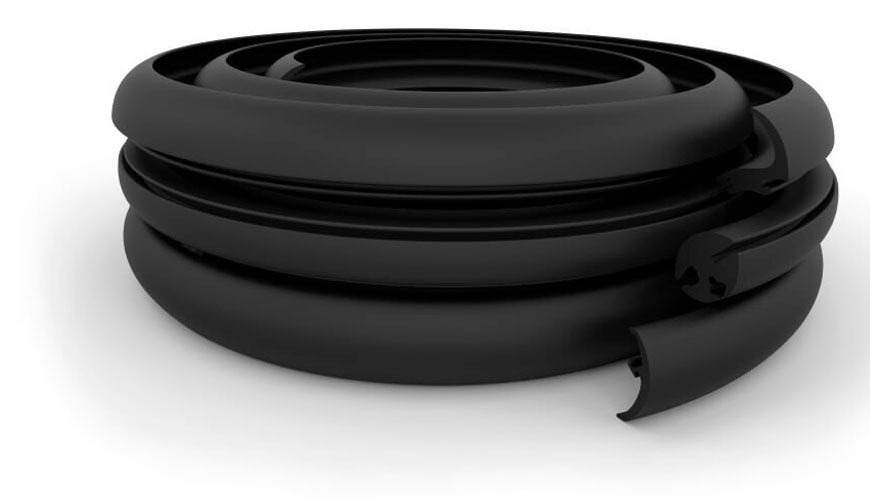

EUROLAB, with its state-of-the-art accredited laboratories and expert team, provides precise and fast testing services within the scope of EN ISO 34 testing. EN ISO 34-1 specifies three test methods for determining the tear strength of vulcanized or thermoplastic rubber:

The obtained tear strength value depends on the shape of the test piece, the flexing rate and the test temperature. It may also be susceptible to grain effects in rubber.
Method A using the trousers test piece is preferred as it is not sensitive to the length of the cut unlike the other two test pieces where the notch must be controlled very closely. In addition, the results obtained are more easily related to the basic tear properties of the material and are less susceptible to modulus effects (provided that leg extension is negligible), and the rate of propagation of the tear is directly related to the grip rate. separation. For some rubbers, the tear progression is not uniform (knotted tear) and the results can be difficult to analyze.
Method B is a combination of tear onset and progression. Tension builds up at the angle point until enough to initiate a tear, and then more tension propagates that tear. However, it is only possible to measure the overall force required to shatter the test piece, and therefore the force cannot be resolved in the two components that produce initiation and propagation.
The test consists of measuring the force required to tear a particular test piece completely along the width of the procedural test piece, either in continuation of the cut or notch already created in the test piece, or in the case of method B. The tearing force is applied by means of a tensile testing machine that is operated continuously at a constant travel speed until the test piece breaks. Depending on the method used, the maximum or median force obtained is used to calculate the tear strength.
EUROLAB assists manufacturers with EN ISO 34 test compliance. Our test experts, with their professional working mission and principles, provide you, our manufacturers and suppliers, the best service and controlled testing process in our laboratories. Thanks to these services, businesses receive more effective, high-performance and quality testing services and provide safe, fast and uninterrupted service to their customers.
To get an appointment, to get more detailed information or to request an evaluation, you can ask us to fill in our form and reach you.